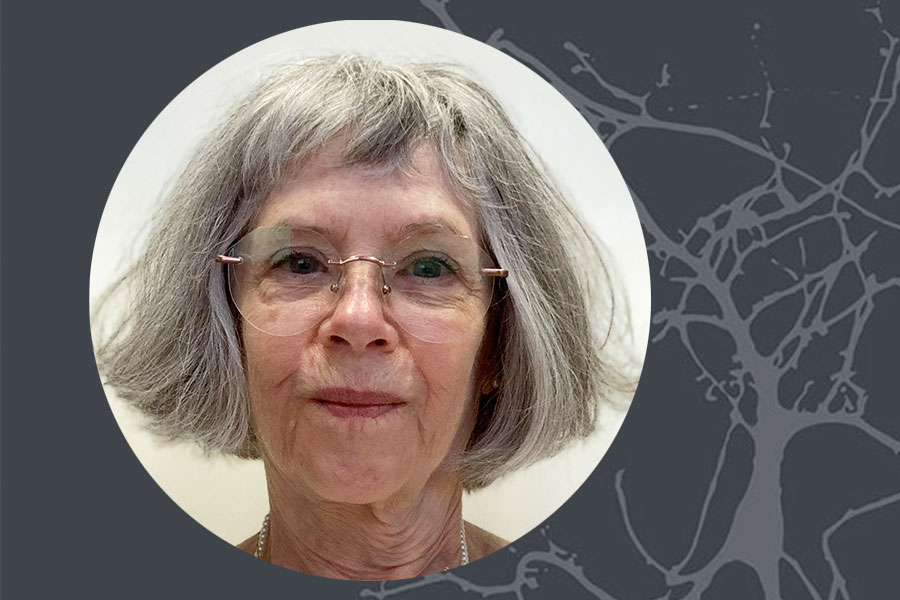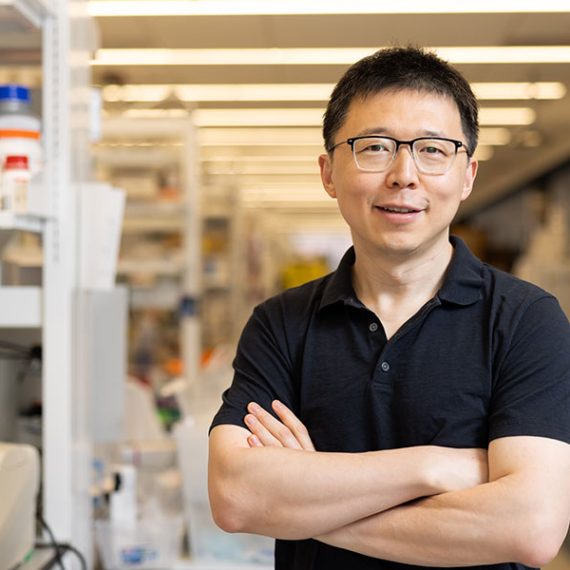Margaret Livingstone awarded the 2024 Scolnick Prize in Neuroscience
Harvard neurobiologist is recognized for her discovery that experience is necessary and sufficient for the formation of face-specific brain domains.

Today the McGovern Institute at MIT announces that the 2024 Edward M. Scolnick Prize in Neuroscience will be awarded to Margaret Livingstone, Takeda Professor of Neurobiology at Harvard Medical School. The Scolnick Prize is awarded annually by the McGovern Institute, for outstanding achievements in neuroscience.
“Margaret Livingstone’s driven curiosity and original experimental approaches have led to fundamental advances in our understanding of visual perception,” says Robert Desimone, director of the McGovern Institute and chair of the selection committee. “In particular, she has made major advances in resolving a long-standing debate over whether the brain domains and neurons that are specifically tuned to detect facial features are present from birth or arise from experience. Her developmental research shows that the cerebral cortex already contains topographic sensory maps at birth but that domain-specific maps, for example to recognize facial-features, require experience and sensory input to develop normally.”
“Margaret Livingstone’s driven curiosity and original experimental approaches have led to fundamental advances in our understanding of visual perception.” — Robert Desimone
Livingstone received a BS from MIT in 1972 and, under the mentorship of Edward Kravitz, a PhD in neurobiology from Harvard University in 1981. Her doctoral research in lobsters showed that the biogenic amines serotonin and octopamine control context-dependent behaviors such as offensive versus defensive postures. She followed up on this discovery as a postdoctoral fellow by researching biogenic amine signaling in learning and memory, with Prof. William Quinn at Princeton University. Using learning and memory mutants created in the fruit fly model she identified defects in dopamine-synthesizing enzymes and calcium-dependent enzymes that produce cAMP. Her results supported the then burgeoning idea that biogenic amines signal through second messengers enable behavioral plasticity.
To test whether biogenic amines also control neuronal function in mammals, Livingstone moved back to Harvard Medical School in 1983 to study the effects of sleep on visual processing with David Hubel, who was studying neuronal activity in the nonhuman primate visual cortex. Over the course of a 20-year collaboration, Livingstone and Hubel showed that the visual system is functionally and anatomically divided into parallel pathways that detect and process the distinct visual features of color, motion, and orientation.
Livingstone quickly rose through the academic ranks at Harvard to be appointed as an instructor and then assistant professor in 1983, associate professor in 1986 and full professor in 1988. With her own laboratory, Livingstone began to explore the organization of face-perception domains in the inferotemporal cortex of nonhuman primates. By combining single-cell recording and fMRI brain imaging data from the same animal, her then graduate student Doris Tsao, in collaboration with Winrich Freiwald, showed that an abundance of individual neurons within the face-recognition domain are tuned to a combination of facial features. These results helped to explain the long-standing question of how individual neurons show such exquisite selectivity to specific faces.

In researching face patches, Livingstone became fascinated with the question of whether face-perception domains are present from birth, as many scientists thought at the time. Livingstone and her postdoc Michael Arcaro carried out experiments that showed that the development of face patches requires visual exposure to faces in the early postnatal period. Moreover, they showed that entirely unnatural symbol-specific domains can form in animals that experienced intensive visual exposure to symbols early in development. Thus, experience is both necessary and sufficient for the formation of feature-specific domains in the inferotemporal cortex. Livingtone’s results support a consistent principle for the development of higher-level cortex, from a hard-wired sensory topographic map present at birth to the formation of experience-dependent domains that detect combined, stimulus-specific features.
Livingstone is also known for her scientifically based exploration of the visual arts. Her book “Vision and Art: The Biology of Seeing,” which has sold more than 40,000 copies to date, explores how both the techniques artists use and our anatomy and physiology influence our perception of art. Livingstone has presented this work to audiences around the country, from Pixar Studios, MicroSoft and IBM to The Metropolitan Museum of Art, The National Gallery and The Hirshhorn Museum.
In 2014, Livingstone was awarded the Takeda Professorship of Neurobiology at Harvard Medical School. She was awarded the Mika Salpeter Lifetime Achievement Award from the Society for Neuroscience in 2011, the Grossman Award from the Society of Neurological Surgeons in 2013 and the Roberts Prize for Best Paper in Physics in Medicine and Biology in 2013 and 2016. Livingstone was elected fellow of the American Academy of Arts and Sciences in 2018 and of the National Academy of Science in 2020. She will be awarded the Scolnick Prize in the spring of 2024.




